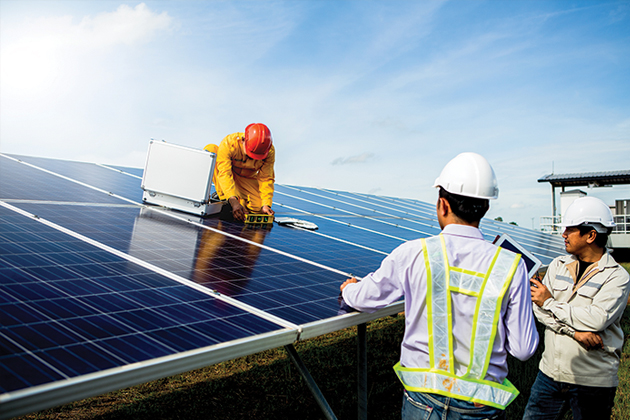
Citing an attempt to boost the American manufacturing sector and create jobs for domestic solar panel manufacturers, the Trump administration recently imposed import tariffs of up to 30% on all solar panels coming from outside of the United States. Solar stocks surged, with Wall Street seeing an opportunity to invest in domestic solar panel makers.
Those opposed to the tariffs, which went into effect in February, say this move will slow the growth of the burgeoning renewable energy industry and kill jobs in the space. Since the lion’s share of the U.S. solar industry is supported by solar panels built in and shipped from countries like China, South Korea and Canada, they believe the tariff will not promote the purchase of domestic materials. Rather, it could instead stifle the entire industry and bring major solar projects to a screeching halt.
For at least the foreseeable future, the import tariff will impact solar projects in all phases of development. Whether contractors continue using their preferred international manufacturers or begin to explore options state-side, they are likely to experience a bump in equipment costs. If unprepared, companies could be forced to adjust not only budgets, but risk mitigation tactics.
For example, to fortify against related risks, Michael Boches, CEO of Geoscape Solar, prepared his company by setting aside a monetary security blanket. “The message from our marketing team to customers and prospective customers was that homeowners wouldn’t see a price impact because of the tariff,” Boches said. “We were able to say that because we anticipated this tariff and we put some reserves aside as a company to ensure we would not have to put through a massive price increase or adjust contracts that have been signed that weren’t ready to install yet.”
For contractors that do not have funds stashed away, here are three ways to help deal with the rising cost of solar panels:
1. Budget holistically. The cost of running a successful solar contracting company involves more than paying for panels and the people to install them. When developing a pricing model for potential projects, in addition to equipment costs and payroll, be sure to factor in things like insurance premiums, marketing budgets, administrative costs and anything else that allows the company to function at a high level. This holistic approach to pricing can help shelter consumers from feeling the effects of higher equipment costs.
Investing in technology can also bring about budget relief and increase safety on the project site. For example, deploying a drone to perform site inspections can allow the sales team to swiftly and safely evaluate the condition of a roof while keeping employees on the ground. Plus, a recorded pre- and post-installation inspection can be saved as evidence of site conditions on the job in the event that any related claims arise.
2. Know your exposure. The price of panels will now inch into profit margins, which can have a cascading effect on other parts of the business, including payroll estimates and business projections for 2018.
Be sure to understand how these changes impact your insurance policies. Because of these changes, many contractors may want to reconsider sales, payroll and subcontractor costs when providing updated exposures for policy renewals. If they have not already done so, insurance brokers in tune with the solar industry will ask clients how the tariff is affecting them in order to protect insureds.
3. Have proper insurance coverage. Many contractors anticipated the tariffs and will take steps to minimize the impact on their businesses, but they also need to consider the impact to their insurance portfolio now that the tariffs are in effect. Higher equipment costs could cause businesses in the commercial and utility sectors of the solar industry to shift focus to residential contracting as far fewer panels are needed for residential projects. Many solar contractors, however, have general liability policies that preclude coverage should they move into the residential space. It is critical to review existing policies and consult with a broker or insurer that understands the niche to help prevent these unintended coverage gaps.
Some risk mitigation measures may also require a review of existing insurance policies. For example, contractors that purchased and stored panels in bulk before the tariffs went into effect should verify that their first-party coverage limits on the storage facility are high enough to cover the influx of equipment. Coverage for newly-added safety and efficiency technology should also be reviewed. Most policies exclude damage from operated aircraft like drones, so insureds must check whether their policy has explicit provisions covering drone use.
